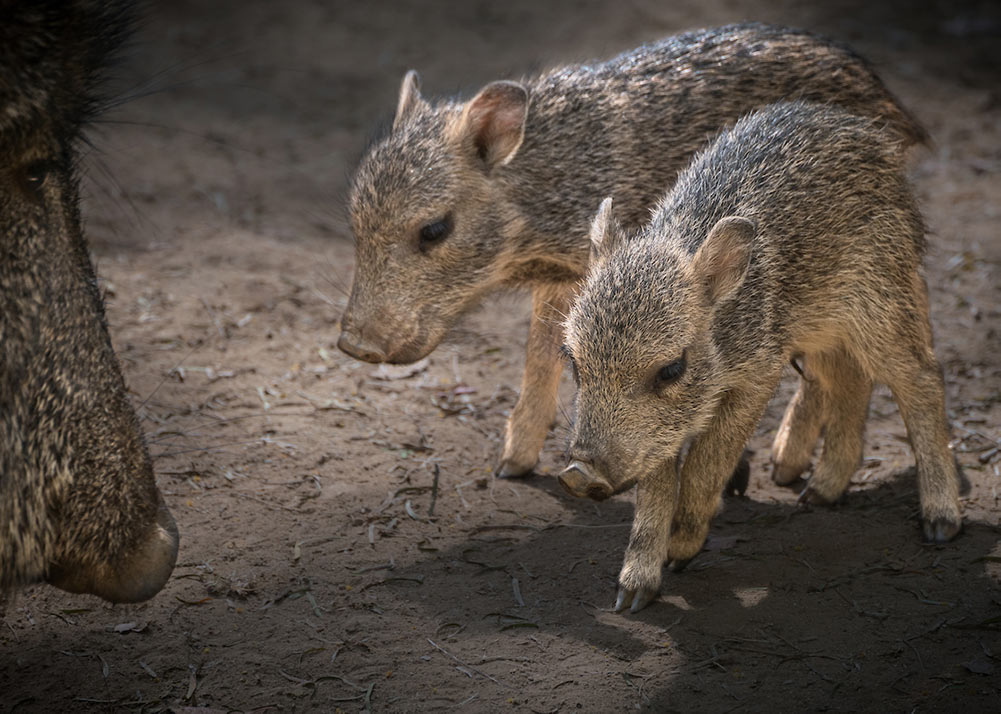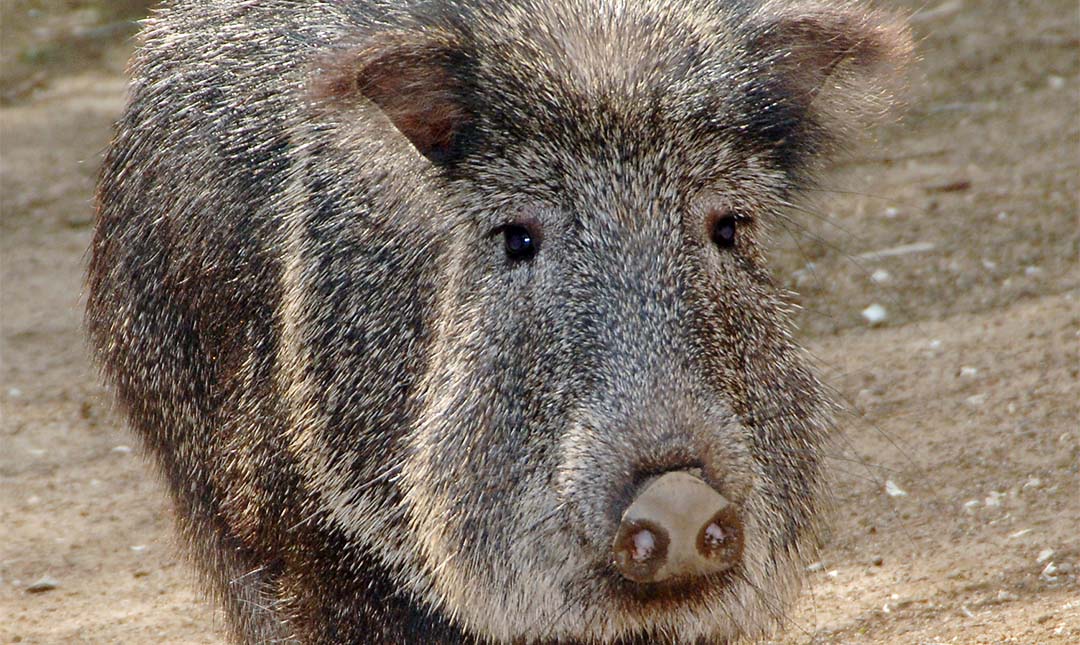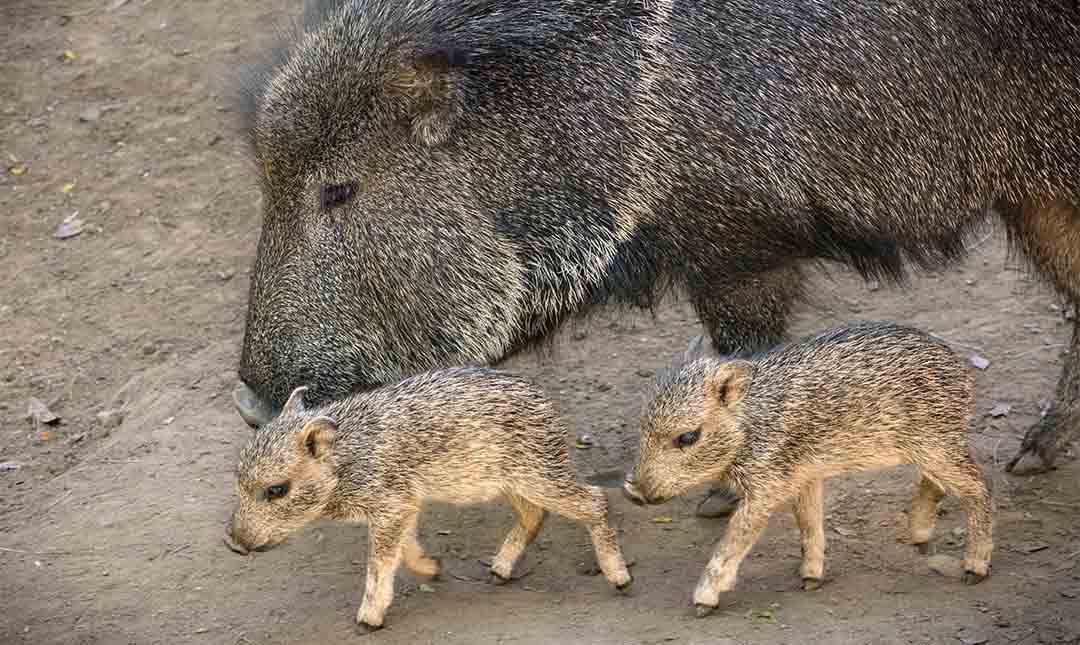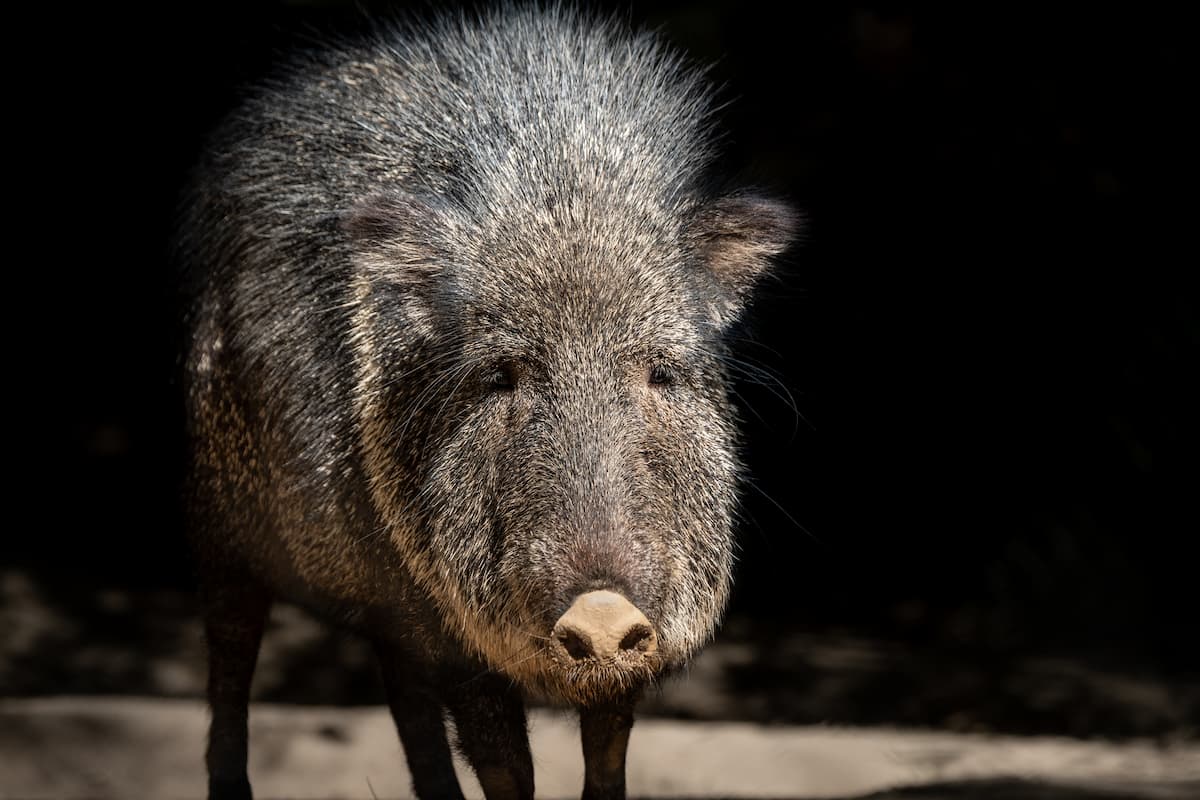About
The word “peccary” comes from the indigenous Tupi language, meaning “an animal which makes many paths through the woods.” These pig-like animals are social and live in small herds of three to 10 individuals. They move continuously throughout their home range averaging a mile a day while foraging. They rest together and only sleep in the same place for two or three nights. Peccaries live in a world of scent. Nipple-like scent glands located on their backs produce a musky substance that is used to mark rocks and trees in their territory. They even mark fellow herd members. Chacoan peccaries also use designated scat stations to mark territory. If threatened, they will flee, emitting a musky odor with their hair raised. If there is nowhere to run, the herd may form a defensive line. Predators include jaguars and mountain lions. Ocelots will prey on the young.
Females may give birth annually. After a gestation of about five months, two or three young are born in hollow logs or shallow pits dug in the ground. Babies can stand shortly after birth but stay close, sometimes hiding underneath their mothers in the hollow. The young are weaned at about six weeks and are mature at two years of age. This species faces many threats including hunting and habitat loss. It is believed that less than 3,000 Chacoan peccaries remain in the wild.
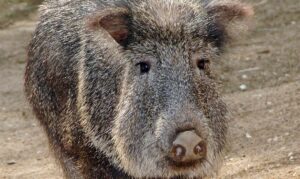
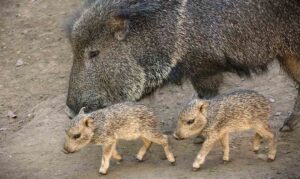
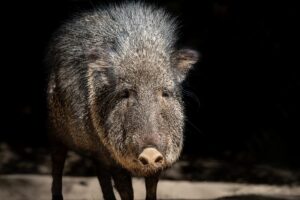
Habitat
Chacoan peccaries are found in the Gran Chaco region of Bolivia, Argentina, and Paraguay. This arid habitat is almost impenetrable, full of thorny scrub brush and cacti. Temperatures are among the hottest in South America and it seldom rains. A number of adaptations help peccaries survive. Small feet allow them to navigate among prickly plants, bristly hair deflects thorns, well-developed sinuses combat dust, and their snouts are tough and leathery. Dust baths and mud wallows are used to cool off.
Diet
Peccaries are herbivorous, eating fruit, cacti, leaves, roots, stems, and seeds. They lick the soil near salt licks or leaf-cutter ant mounds to obtain minerals to supplement their diet. Most of the water they need comes from the cacti they eat, and they are adept at eating Opuntia (prickly pear). After breaking off a single pad, they roll it around with their snouts or use their teeth to remove the spines before breaking into the succulent flesh.
Physical Characteristics
Peccaries resemble wild boars and behave much like pigs, but anatomical differences have led scientists to classify them in their own family. Closer to home, you may be familiar with javelinas (collared peccaries) which are found in Arizona, Texas, and New Mexico. Body length is three to four feet and height averages two feet. Individuals weigh between 65 and 88 pounds. Lifespan averages 10 years.
LOCATION WITHIN THE ZOO
You’ll find this animal in the Animals of the Drylands area. See Zoo Map.

